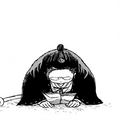No edit summary |
|||
| Line 8: | Line 8: | ||
|manga debut = [[Chapter 23]] |
|manga debut = [[Chapter 23]] |
||
}} |
}} |
||
| − | {{Nihongo|'''Hōjō'''|ほうじょう|Hōjō}} is the second region of [[Kotaku]] that leads |
+ | {{Nihongo|'''Hōjō'''|ほうじょう|Hōjō}} is the second region of [[Kotaku]] that leads travelers to the [[Hōrai]] gate. It is where the [[Sōshin]] nest and acts as a graveyard for the Arborified [[Hōko (Race)|Hōko]]. |
==Layout and Locations== |
==Layout and Locations== |
||
Revision as of 03:24, 28 May 2020
Hōjō (ほうじょう Hōjō?) is the second region of Kotaku that leads travelers to the Hōrai gate. It is where the Sōshin nest and acts as a graveyard for the Arborified Hōko.
Layout and Locations
The layout of Hōjō.
Hōjō is a wasteland divided into seven parts: six rocky valleys surrounding Hōrai. This layout gives Hōjō the appearance of a six petal flower. The region is covered in a thick mist that makes it hard for foreign travelers to navigate. Interestingly, the six valleys are laid out with rocks stacked together on the ground, which is later revealed to have been done by the Sōshin.
Hōko Village
1,000 years ago, an immortal race known as the Hōko inhabited a village in Hōjō and lived peacefully. However, after the villagers underwent Arborification, the village was left in ruins. Years later, Hōko and Mei became the only known people to live in the village.
Trivia
- Hōjō is named after Fāngzhàng, one of the five islands the Eight Immortals reside, which is known as Hōjō in Japanese mythology.



